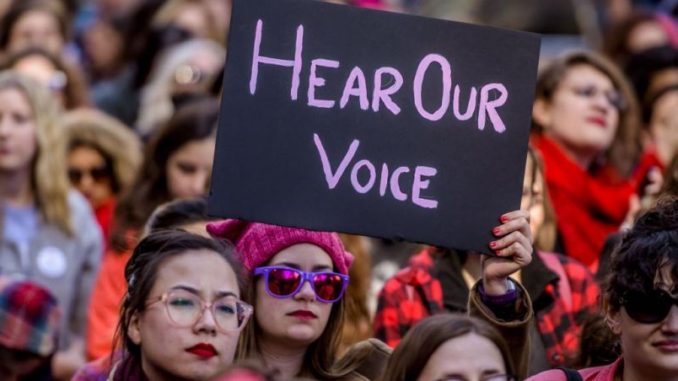
Women’s History Month is giving way to a springtime of global protests. On the 106th anniversary of the Triangle Shirtwaist Factory Fire in New York City, which helped spur the growth of the International Ladies’ Garment Workers’ Union, we acknowledge those who gathered together just a few blocks away from the site of that labor, and human, tragedy for the March 8th 2017 International Women’s Strike.
— Giulia Sbaffi for Wops
“It’s nighttime for the hundreds of thousands of women who went on strike across Europe on International Women’s Day when the crowd in New York starts gathering in Washington Square Park. The iconic arch is lit up by a projection that reads “Women Strike”, and beneath it women representing many different communities are speaking into a microphone: Palestinian women, Black Lives Matter activists, healthcare workers, immigrants… A plurality of voices and experiences, exemplifying together the new intersectional feminism that in recent months has been making waves around the world.
The square is packed with people and filled with a variety of signs. They are held together by a feminist movement that hopes to challenge the sexism and xenophobia raised by Trump’s election, which was a direct consequence of a system rooted deeply in patriarchy and neoliberalism. Soon, the protesters begin marching towards the Financial District, the capital of global finance.
Wednesday’s demonstration took a different posture from the Women’s March in Washington DC. The organizers of the massive January protest against Trump’s divisive presidency decided to not take part in the global strike and only voiced a general message of support through the announcement of “A Day Without a Woman.” The first thing that is clear is that this Women’s Day drove away the ghost of liberal feminism that haunted the march in Washington. The second is that it did so through a strike — three school districts shut down, various university activities were suspended, and many women gave up their salaried or precarious work, as well as care and household work. The strike made visible traditionally invisible work, and by highlighting the current administration’s misogynist policies, shone a light on the deep connections between capital, production and reproduction that affect the life of millions of women around the world.
As the crowd begins to disperse in Zuccotti Park, the ending point of the march, people can leave with the knowledge that this independent and self-organized protest succeeded in introducing a radical and inclusive platform in line with the broader goals of a truly international strike. By striking from both productive and reproductive work, women in the New York area raised their voices to demand a universal right to healthcare, human rights for migrants and LGBTQI individuals, environmental justice, and an end to racist and neocolonial policies.
Awareness of the global nature of this movement seems to grow day by day, and the question that arises at the end of the march is “What’s next? How can we maintain this powerful and enthusiastic awareness of the need for change?” Here in New York, the plan is to hold meetings around the city every week, creating an even broader coalition for the next planned day of action: May Day.”
YouTube Video Source: https://www.youtube.com/watch?v=oxbZV42R4KU
Quoted Text Source: https://wops.noblogs.org/international-womens-strike-us-new-york-rally-and-march/


Leave a Reply
You must be logged in to post a comment.